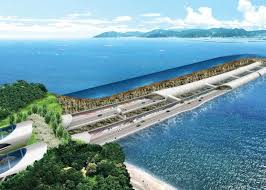In the busy port of Tangier in Morocco, a new plan is underway that may connect Africa and Europe in a way never done before. The governments of Spain and Morocco are thinking of building a tunnel under the Strait of Gibraltar. This tunnel will connect the two continents by rail and bring people, tourists, businesses and goods closer together.
The Strait of Gibraltar is a small piece of water — about 42 kilometers across — that divides Africa and Europe. It is a busy route for ships and ferries, with many people and products crossing back and forth every day. The new tunnel will pass underneath this water, creating a permanent link between the two continents.
This project is not a new idea. It first came up in the 1980s, but technical difficulties and the COVID-19 outbreak made it hard to move forward. Now, the plan has been put back on the table. On May 10, Spain approved a fund of €1.6 million to carry out an updated feasibility study. The study will check if it’s viable to connect Punta Paloma in Cadiz, Spain, with Punta Malabata near Tangier, Morocco.
The Spanish Transport Minister, Oscar Puente, teamed up with Moroccan authorities to make this announcement. They explained in a joint statement that the tunnel is more than just a physical link — it is a symbol of unity between two continents, two cultures, and two growing economies. The tunnel will enable faster movement of people, tourists, and businesses across the Strait of Gibraltar.
The railway tunnel is expected to be about 42 kilometers long. At its deepest, it will lie 475 meters below the water’s surface. But the path under the strait is not an easy one. The area lies close to the Azores-Gibraltar fault, a seismically-active zone prone to earthquakes. That makes designing and building the tunnel a huge technical challenge.
Because of these factors, engineers will need to employ sophisticated methods and technology to make sure the tunnel is strong and safely anchored under the sea. Scientists, geologists, and engineers from both Spain and Morocco will need to study the area carefully. They will have to find a way to avoid weak points in the earth’s structure and account for strong water pressure.
Supporters say this tunnel will be a powerful symbol of unity and progress. It will cut travel time and allow for the flow of people and goods more smoothly. Cargo can move faster from Africa to European markets and tourists can travel more easily between the two continents. Importantly, businesses will find it cheaper and more reliable to send products across the strait, strengthening trade ties and relationships.
This project could bring a huge boost to the local economies of both Spain and Morocco. The port of Tangier, already a key hub for Africa’s trade, may become even more important. The southern region of Spain, which depends on tourism and industry, is also expected to benefit from this link.
But there are worries and doubts, too. Some say the cost might spiral and become hard to control. Others fear earthquakes could damage the tunnel and put lives at risk. There are also environmental questions about how the tunnel might affect marine life in the Strait of Gibraltar. Nevertheless, both the Spanish and Moroccan governments say the benefits outweigh these risks.
As the plans move forward, engineers and planners will need to resolve many technical, financial, and environmental issues. But the hope is that a tunnel under the Strait of Gibraltar will connect Africa and Europe in a way that brings them closer together — not just physically, but culturally and economically — for years to come.
